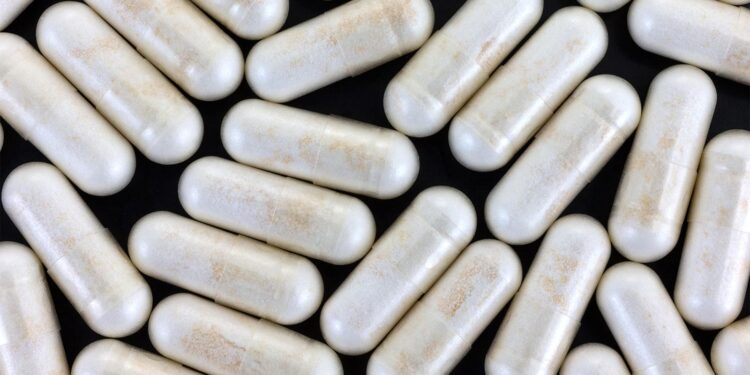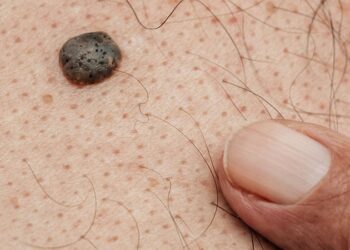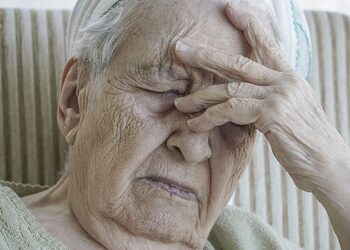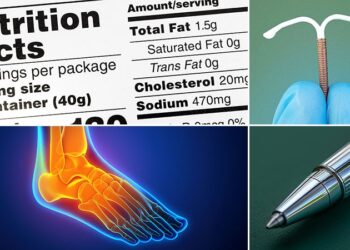The American Glaucoma Society and American Academy of Ophthalmology are warning eye doctors to be aware of potentially toxic effects on the liver from the vitamin B3 derivative nicotinamide as it gains traction as a possible glaucoma therapy.
If nicotinamide doses less than 3 g/day are being considered by patients or physicians, primary care physicians should be consulted and periodic liver function testing should be performed, said Aakriti Garg Shukla, MD, MSc, of the Edward S. Harkness Eye Institute at Columbia University Irving Medical Center in New York City, and colleagues in a statement published in Ophthalmology Glaucoma.
Given the potential for drug-induced liver injury (DILI), the use of nicotinamide at high doses (3 g/day or more) is not recommended “outside the confines of clinical trials where liver function is closely monitored,” they added.
They also warned against use of nicotinamide — which is not FDA approved — in patients with current or previous liver disease, and recommended against using niacin, another form of vitamin B3, in place of nicotinamide.
“While niacin is a form of vitamin B3 and nicotinamide is its amide derivative, niacin and nicotinamide are not interchangeable. Niacin is not being tested as a neuroprotective agent in human glaucoma trials, and it is known to be hepatotoxic in high doses,” Shukla and team noted. “Therefore, the [American Glaucoma Society] and Academy strongly recommend against the use of niacin in place of nicotinamide for glaucoma neuroprotection.”
Nicotinamide’s potential as a glaucoma treatment has been a hot topic in ophthalmology for years, said Victoria L. Tseng, MD, PhD, of the University of California Los Angeles Stein Eye Institute.
“We are constantly looking for therapies for glaucoma that can offer protection to the optic nerve since current therapies can only slow glaucoma down by reducing eye pressure,” Tseng told MedPage Today. “Patients are also interested in options other than eye drops and surgery.”
A previous phase II randomized trial linked daily 3-g nicotinamide and calcium pyruvate to improvements in visual field tests, and a crossover randomized trial showed that this dose of nicotinamide was associated with improved inner retinal function. However, these trials “do not consistently translate to visual recovery that is impactful to the patient,” Shukla and colleagues wrote.
Meanwhile, several trials are exploring the use of nicotinamide in glaucoma. According to the authors, they have a target enrollment of more than 1,300 patients.
However, as they noted, using nicotinamide comes with risks, with two patients in clinical trials developing DILI. One patient, a 73-year-old woman in the U.S., developed DILI while taking nicotinamide 3 g daily and was hospitalized. Her liver enzyme levels recovered after she stopped taking the supplement.
The other patient, a 69-year-old woman in Singapore, developed DILI after taking the same dose of nicotinamide or placebo. (She was not unmasked.) Her symptoms resolved after she stopped taking doses.
“Glaucoma specialists are aware of the early clinical trial data,” Angelo P. Tanna, MD, of Northwestern University Feinberg School of Medicine in Chicago, told MedPage Today.
“Based on my most recent discussions with a large group of glaucoma specialists, physicians are quite concerned about the risk of hepatotoxicity,” said Tanna. “Drug-induced hepatotoxicity is life-threatening.”
Tseng said the joint statement is reasonable. “The risks to the liver are valid concerns, especially with the higher dosing for glaucoma,” she said. “The recommendation for close monitoring of the liver for people electing to use nicotinamide certainly seems valid and warranted.”
For now, she added, “I don’t think there is enough established evidence regarding its benefits and the safety of the high dosing for any glaucoma specialists to be routinely recommending nicotinamide for glaucoma treatment.”
For his part, Tanna noted that the “use of nicotinamide is reasonable to consider for patients who accept the risks in those with glaucoma that continues to worsen despite optimal intraocular pressure control.” Following the statement’s recommendations, the patient’s internist should be involved to monitor liver tests, he said.
Disclosures
Funding was provided by Research to Prevent Blindness and the Glaucoma Foundation.
Tseng had no disclosures.
Tanna is on the editorial board of Ophthalmology Glaucoma and is a member of the American Glaucoma Society and American Academy of Ophthalmology.
Primary Source
Ophthalmology Glaucoma
Source Reference: Shukla AG, et al “American Glaucoma Society-American Academy of Ophthalmology position statement on nicotinamide use for glaucoma neuroprotection” Ophthalmol Glaucoma 2025; DOI: 10.1016/j.ogla.2025.01.002.
Source link : https://www.medpagetoday.com/ophthalmology/glaucoma/113799
Author :
Publish date : 2025-01-16 16:13:59
Copyright for syndicated content belongs to the linked Source.


![author['full_name']](https://newshealth.biz/wp-content/uploads/2025/01/Use-of-Supplement-for-Glaucoma-May-Come-With-Liver-Toxicity.jpg)












